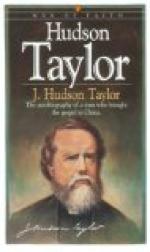* * *
Tahawas, rising stern and grand,
“Cloud-sunderer”
lift thy forehead high,
Guard well thy sun-kissed mountain land
Whose lakes seem borrowed
from the sky.
Wallace Bruce.
* * *
GEOLOGY OF THE HUDSON.
In addition to various geological references scattered through these pages the following facts from an American Geological Railway Guide, by James Macfarlane, Ph.D., will be of interest.
“The State of New York is to the geologist what the Holy Land is to the Christian, and the works of her Palaeontologist are the Old Testament Scriptures of the science. It is a Laurentian, Cambrian, Silurian and Devonian State, containing all the groups and all the formations of these long ages, beautifully developed in belts running nearly across the State in an east and west direction, lying undisturbed as originally laid down.
“The rock of New York Island is gneiss, except a portion of the north end, which is limestone. The south portion is covered with deep alluvial deposits, which in some places are more than 100 feet in depth. The natural outcroppings of the gneiss appeared on the surface about 16th Street, on the east side of the city, and run diagonally across to 31st Street on 10th Avenue. North of this, much of the surface was naked rock. It contains a large proportion of mica, a small proportion of quartz and still less feldspar, but generally an abundance of iron pyrites in very minute crystals, which, on exposure, are decomposed. In consequence of these ingredients it soon disintegrates on exposure, rendering it unfit for the purposes of building. The erection of a great city, for which this island furnishes a noble site, has very greatly changed its natural condition. The geological age of the New York gneiss is undoubtedly very old, not the Laurentian or oldest, nor the Huronian, but it belongs to the third or White Mountain series, named by Dr. Hunt the Montalban. It is the same range which is the basis rock of nearly all the great cities of the Atlantic coast. It crosses New Jersey where it is turned to clay, until it appears under Trenton, and it extends to Philadelphia, Baltimore, Washington and Richmond, Va., and probably Boston, Massachusetts, is founded on this same formation.
* * *
Oh, river! darkling river! what a voice
Is that thou utterest while all else is
still!
William Cullen Bryant.
* * *
“On the opposite side of the river may here be seen for many miles the Palisades, a long, rough mountain ridge close to the water’s edge. Its upper half is a perpendicular precipice of bare rock of a columnar structure from 100 to 200 feet in height, the whole height of the mountain being generally from 400 to 600 feet, and the highest point in the range opposite Sing Sing 800 feet above the Hudson, and known as the High Torn. The width




